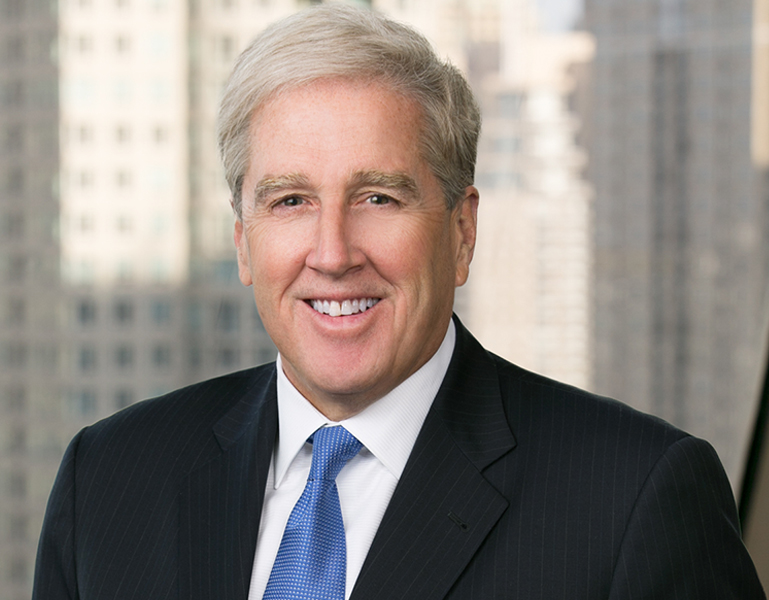The GENIUS Act: Stablecoin Regulation Enters the Federal Framework
On July 18, 2025, President Trump signed the Guaranteed Essential National Infrastructure for U.S. Act (the “GENIUS Act”) into law, marking the first comprehensive U.S. federal regulatory framework for payment stablecoins. The GENIUS Act has far-reaching implications for regulated financial institutions, including banks, credit unions and nonbanking entities, interested in issuing stablecoins, providing custody, compliance or infrastructure support to digital asset firms, and/or banking third-party stablecoin issuers and vendors.
This bulletin provides a review of the key provisions of the GENIUS Act and its potential impact on regulated financial institutions.
1. Permitted Stablecoin Issuers and Activities
The GENIUS Act limits the issuance of payment stablecoins in the U.S. to “permitted payment stablecoin issuers,” which it defines to include:
- (i) subsidiaries of insured depository institutions with approval from the applicable “primary Federal payment stablecoin regulator”[1] to issue payment stablecoins;
- (ii) nonbank entities, uninsured national banks chartered by the Office of the Comptroller of the Currency (“OCC”) and federal branches of foreign banks that have received approval from the OCC to issue payment stablecoins;(iii) state-chartered nonbank entities that issue an aggregate amount of payment stablecoins equal to or less than $10 billion subject to the relevant state-level stablecoin regulatory regime; and
- (iv) non-financial companies that satisfy a heightened approval process.
The GENIUS Act provides that a permitted payment stablecoin issuer may (i) issue payment stablecoins; (ii) redeem payment stablecoins; (iii) manage related reserves, including purchasing, selling and holding reserve assets or providing custodial services for reserve assets; (iv) provide custodial or safekeeping services for payment stablecoins, required reserves or private keys of payment stablecoins; and (v) undertake other activities that directly support permitted stablecoin activities. Beginning three years from the GENIUS Act’s enactment, it will be illegal to offer or sell a payment stablecoin in the U.S. unless the payment stablecoin is issued by a permitted payment stablecoin issuer (or certain foreign payment stablecoin issuers).
Takeaway: Banks and credit unions may issue payment stablecoins through subsidiaries without needing a separate OCC stablecoin charter. However, national banks must still comply with forthcoming OCC supervisory standards including performing an effective risk assessment of its control environment and cryptographic key management. Since nonbank FinTech customers must either become federally permitted or cease issuance, banks and credit unions should ensure that such customers or vendors, as the case may be, have the appropriate licenses and approvals prior to entering into any relationship.
2. Reserve Requirements – Liquidity and Risk Management Implications
Permitted payment stablecoin issuers will be required to maintain reserves backing all outstanding payment stablecoins on a 1-to-1 basis, at a minimum. Such reserves can include (i) U.S. currency (including Federal Reserve notes), (ii) demand deposits or insured shares at insured banks and credit unions, (iii) Treasury bills, notes or bonds issued with a remaining maturity, or issued with a maturity, of 93 days or less, (iv) reverse repurchase agreements or money received under repurchase agreements and (v) securities issued by registered investment companies or registered government money market funds. Except in limited situations, reserves may not be pledged, rehypothecated or reused by the permitted payment stablecoin issuer, either directly or indirectly.
Permitted payment stablecoin issuers will be required to publicly disclose a redemption policy, which must include (i) procedures for timely redemptions of outstanding payment stablecoins and (ii) all fees associated with purchasing or redeeming the payment stablecoins. Additionally, permitted payment stablecoin issuers will be required to publish a monthly composition of their reserves containing the total number of outstanding payment stablecoins they have issued and the amount and composition of their reserves.
Banks and credit unions providing customers with custodial or safekeeping services for reserve assets backing permitted payment stablecoins, such as collateral or private keys, are prohibited from commingling these assets with other accounts. Such institutions are required to safeguard such assets and take appropriate steps to protect the payment stablecoins, private keys, cash and other property of their customers from claims of the institutions’ creditors. Banks and credit unions must also follow their applicable primary federal regulator’s guidance concerning custody and safekeeping requirements.
Takeaway: Banks and credit unions serving as custodians for reserve assets must ensure strict segregation and compliance with custody protocols. In addition, liquidity management will be critical for banks contemplating issuing stablecoins since reserve assets cannot be rehypothecated or used for general lending activities.
3. Priority Treatment in Insolvency
In the event of any insolvency proceeding of a permitted payment stablecoin issuer, the GENIUS Act grants persons holding payment stablecoins priority, on a ratable basis with the claims of other persons holding such payment stablecoins, over any other claims on the required payment stablecoin reserves of such payment stablecoin issuer.
Takeaway: This creates a new asset class akin to pass through-insured accounts but outside traditional deposit insurance. Banks serving as trustees or custodians must evaluate legal liability and operational readiness to manage such claims structures.
4. Truth in Marketing – Prohibitions on Misrepresentations of Insured Status
The GENIUS Act provides that payment stablecoins will not be (i) backed by the full faith and credit of the United States, (ii) guaranteed by the U.S. government, (iii) subject to deposit insurance by the Federal Deposit Insurance Corporation (“FDIC”) or (iv) subject to share insurance by the National Credit Union Administration. Accordingly, the GENIUS Act makes it unlawful to represent that payment stablecoins are insured or secured under any of these regimes and provides that violations of this limitation can result in civil penalties of up to $500,000 per violation.
Takeaway: Banks and credit unions should review any co-branded stablecoin products or joint marketing materials to ensure that customers are not misled about the insured status of a payment stablecoin. Communications involving third-party technology vendors or white-label arrangements should also be vetted for compliance.
5. Dual Supervisory Paths – Federal vs. State Oversight
Issuers with under $10 billion of payment stablecoins in circulation may elect to operate under a certified state regime, provided the state’s stablecoin regulatory regime is certified by the Stablecoin Certification Review Committee[2] within one year of the Act’s effective date, which certification must be confirmed annually thereafter. Over that threshold, state-qualified payment stablecoin issuers must either (i) transition to the Federal regulatory framework, (ii) immediately cease issuing new payment stablecoins until the payment stablecoin is under the $10 billion threshold or (iii) obtain a waiver from the applicable primary Federal payment stablecoin regulator to remain solely supervised by a state payment stablecoin regulator, but such a waiver is not available to state-chartered depository institutions.
Takeaway: Banks and credit unions operating in multiple jurisdictions may benefit from uniform OCC supervision rather than navigating potentially differing state requirements. Banks and credit unions partnering with state-regulated FinTech market participants should assess whether those partners remain compliant post-enactment.
6. AML Requirements and Foreign Issuer Restrictions
Permitted payment stablecoin issuers are treated as financial institutions for purposes of the Bank Secrecy Act, which means that they are subject to, among other things, maintaining anti-money laundering (“AML”) and economic sanctions compliance programs. The Act requires each permitted payment stablecoin issuer to annually certify that the issuer has implemented AML and economic sanctions compliance programs reasonably designed to prevent money laundering activities and the financing of terrorist activities, in particular, money laundering for cartels and organizations designated as foreign terrorist organizations. A foreign stablecoin issuer generally may not offer stablecoins in the United States unless the foreign issuer (i) is subject to a foreign regulatory regime for stablecoins comparable to that provided for in the Act, which the Secretary of the Treasury must certify, (ii) registers with the OCC and (iii) maintains reserves in a U.S. financial institution sufficient to meet the liquidity demands of U.S. customers.
Takeaway: This provision seemingly reduces U.S. stablecoin issuer exposure to foreign stablecoins circulating in unregulated environments. Banks and credit unions providing custody, settlement or trading infrastructure for an account must screen assets and counterparties for compliance with applicable law.
7. Interoperability and Standards Development – Technical Readiness
The primary Federal payment stablecoin regulators, in consultation with the National Institute of Standards and Technology, other relevant standard-setting organizations and state bank and credit union regulators are required to assess and, if necessary, prescribe standards for permitted payment stablecoin issuers to promote compatibility and interoperability with (i) other permitted payment stablecoin issuers and (ii) the broader digital finance ecosystem, including accepted communications protocols and blockchains.
Takeaway: Banks and credit unions offering digital asset custody or blockchain payment platforms should anticipate minimum technology standards becoming mandatory. This may include integration with third-party application programming interfaces, transaction reporting protocols and consumer protections.
8. Implementation Timeline and Rulemaking
The GENIUS Act takes effect on the earlier of (i) 18 months after the Act’s enactment or (ii) 120 days after the date on which the “primary Federal payment stablecoin regulators” issue ANY final regulations implementing the Act. Regulators have 180 days to report to Congress on implementing regulations covering (i) payment stablecoin issuer applications, (ii) reserve asset management, (iii) custody arrangements, (iv) AML compliance protocols and (v) interagency coordination.
Takeaway: The Act’s effective date heightens the importance of the rulemaking process and early engagement with regulators. Clients should monitor regulatory developments, assess strategic opportunities for product development or partnership, and compliance teams should update policies and procedures and evaluate the effect of the GENIUS Act and related regulations impact on compliance.
Conclusion:
The GENIUS Act formalizes stablecoin regulation in a manner that recognizes their role in the future of settlements and payments, while establishing and maintaining consumer and systemic safeguards. For banks and other financial institutions and service providers, it presents both new opportunities (e.g., issuing stablecoins, custody of reserves, participating in payment innovation, etc.) and increased compliance demands (e.g., truth-in-marketing, AML exposure, resolution risks, etc.).
We are closely monitoring rulemakings and are prepared to assist with product structuring, client engagement with regulators, drafting and revising policies, procedures and compliance reviews, and reviewing vendor/service provider agreements. For further guidance or questions about the GENIUS Act and related rulemakings, please contact your Vedder Price attorney or one of the authors of this bulletin.
If you have any questions about this article, please contact Jennifer D. King at jking@vedderprice.com, Thomas A. Geraghty at tgeraghty@vedderprice.com, Megan L. Jones at mljones@vedderprice.com, Todd F. Lurie at tlurie@vedderprice.com, James W. Morrissey at jmorrissey@vedderprice.com, Daniel McKay at dmckay@vedderprice.com, Mark C. Svalina at msvalina@vedderprice.com, Kelly L. Miller at kmiller@vedderprice.com, Nicholas S. Zlevor at nzlevor@vedderprice.com or any other Vedder Price attorney with whom you have worked.
[1] The Act provides that a “primary Federal payment stablecoin regulator” means (i) with respect to a subsidiary of an insured depository institution, the appropriate Federal banking agency of such insured depository institution; (ii) with respect to an insured credit union (or a subsidiary thereof), the National Credit Union Administration; (iii) with respect to a State chartered depository institution, the FDIC (defined below), the OCC (defined below), or the Federal Reserve Board of Governors (“Board”); and (iv) with respect to a Federal qualified payment stablecoin issuer, the OCC.
[2] This committee is comprised of the Secretary of the Treasury (as chair), the chair of the Board and the chair of the FDIC.
Vedder Thinking | Articles The GENIUS Act: Stablecoin Regulation Enters the Federal Framework
Article
July 25, 2025
On July 18, 2025, President Trump signed the Guaranteed Essential National Infrastructure for U.S. Act (the “GENIUS Act”) into law, marking the first comprehensive U.S. federal regulatory framework for payment stablecoins. The GENIUS Act has far-reaching implications for regulated financial institutions, including banks, credit unions and nonbanking entities, interested in issuing stablecoins, providing custody, compliance or infrastructure support to digital asset firms, and/or banking third-party stablecoin issuers and vendors.
This bulletin provides a review of the key provisions of the GENIUS Act and its potential impact on regulated financial institutions.
1. Permitted Stablecoin Issuers and Activities
The GENIUS Act limits the issuance of payment stablecoins in the U.S. to “permitted payment stablecoin issuers,” which it defines to include:
- (i) subsidiaries of insured depository institutions with approval from the applicable “primary Federal payment stablecoin regulator”[1] to issue payment stablecoins;
- (ii) nonbank entities, uninsured national banks chartered by the Office of the Comptroller of the Currency (“OCC”) and federal branches of foreign banks that have received approval from the OCC to issue payment stablecoins;(iii) state-chartered nonbank entities that issue an aggregate amount of payment stablecoins equal to or less than $10 billion subject to the relevant state-level stablecoin regulatory regime; and
- (iv) non-financial companies that satisfy a heightened approval process.
The GENIUS Act provides that a permitted payment stablecoin issuer may (i) issue payment stablecoins; (ii) redeem payment stablecoins; (iii) manage related reserves, including purchasing, selling and holding reserve assets or providing custodial services for reserve assets; (iv) provide custodial or safekeeping services for payment stablecoins, required reserves or private keys of payment stablecoins; and (v) undertake other activities that directly support permitted stablecoin activities. Beginning three years from the GENIUS Act’s enactment, it will be illegal to offer or sell a payment stablecoin in the U.S. unless the payment stablecoin is issued by a permitted payment stablecoin issuer (or certain foreign payment stablecoin issuers).
Takeaway: Banks and credit unions may issue payment stablecoins through subsidiaries without needing a separate OCC stablecoin charter. However, national banks must still comply with forthcoming OCC supervisory standards including performing an effective risk assessment of its control environment and cryptographic key management. Since nonbank FinTech customers must either become federally permitted or cease issuance, banks and credit unions should ensure that such customers or vendors, as the case may be, have the appropriate licenses and approvals prior to entering into any relationship.
2. Reserve Requirements – Liquidity and Risk Management Implications
Permitted payment stablecoin issuers will be required to maintain reserves backing all outstanding payment stablecoins on a 1-to-1 basis, at a minimum. Such reserves can include (i) U.S. currency (including Federal Reserve notes), (ii) demand deposits or insured shares at insured banks and credit unions, (iii) Treasury bills, notes or bonds issued with a remaining maturity, or issued with a maturity, of 93 days or less, (iv) reverse repurchase agreements or money received under repurchase agreements and (v) securities issued by registered investment companies or registered government money market funds. Except in limited situations, reserves may not be pledged, rehypothecated or reused by the permitted payment stablecoin issuer, either directly or indirectly.
Permitted payment stablecoin issuers will be required to publicly disclose a redemption policy, which must include (i) procedures for timely redemptions of outstanding payment stablecoins and (ii) all fees associated with purchasing or redeeming the payment stablecoins. Additionally, permitted payment stablecoin issuers will be required to publish a monthly composition of their reserves containing the total number of outstanding payment stablecoins they have issued and the amount and composition of their reserves.
Banks and credit unions providing customers with custodial or safekeeping services for reserve assets backing permitted payment stablecoins, such as collateral or private keys, are prohibited from commingling these assets with other accounts. Such institutions are required to safeguard such assets and take appropriate steps to protect the payment stablecoins, private keys, cash and other property of their customers from claims of the institutions’ creditors. Banks and credit unions must also follow their applicable primary federal regulator’s guidance concerning custody and safekeeping requirements.
Takeaway: Banks and credit unions serving as custodians for reserve assets must ensure strict segregation and compliance with custody protocols. In addition, liquidity management will be critical for banks contemplating issuing stablecoins since reserve assets cannot be rehypothecated or used for general lending activities.
3. Priority Treatment in Insolvency
In the event of any insolvency proceeding of a permitted payment stablecoin issuer, the GENIUS Act grants persons holding payment stablecoins priority, on a ratable basis with the claims of other persons holding such payment stablecoins, over any other claims on the required payment stablecoin reserves of such payment stablecoin issuer.
Takeaway: This creates a new asset class akin to pass through-insured accounts but outside traditional deposit insurance. Banks serving as trustees or custodians must evaluate legal liability and operational readiness to manage such claims structures.
4. Truth in Marketing – Prohibitions on Misrepresentations of Insured Status
The GENIUS Act provides that payment stablecoins will not be (i) backed by the full faith and credit of the United States, (ii) guaranteed by the U.S. government, (iii) subject to deposit insurance by the Federal Deposit Insurance Corporation (“FDIC”) or (iv) subject to share insurance by the National Credit Union Administration. Accordingly, the GENIUS Act makes it unlawful to represent that payment stablecoins are insured or secured under any of these regimes and provides that violations of this limitation can result in civil penalties of up to $500,000 per violation.
Takeaway: Banks and credit unions should review any co-branded stablecoin products or joint marketing materials to ensure that customers are not misled about the insured status of a payment stablecoin. Communications involving third-party technology vendors or white-label arrangements should also be vetted for compliance.
5. Dual Supervisory Paths – Federal vs. State Oversight
Issuers with under $10 billion of payment stablecoins in circulation may elect to operate under a certified state regime, provided the state’s stablecoin regulatory regime is certified by the Stablecoin Certification Review Committee[2] within one year of the Act’s effective date, which certification must be confirmed annually thereafter. Over that threshold, state-qualified payment stablecoin issuers must either (i) transition to the Federal regulatory framework, (ii) immediately cease issuing new payment stablecoins until the payment stablecoin is under the $10 billion threshold or (iii) obtain a waiver from the applicable primary Federal payment stablecoin regulator to remain solely supervised by a state payment stablecoin regulator, but such a waiver is not available to state-chartered depository institutions.
Takeaway: Banks and credit unions operating in multiple jurisdictions may benefit from uniform OCC supervision rather than navigating potentially differing state requirements. Banks and credit unions partnering with state-regulated FinTech market participants should assess whether those partners remain compliant post-enactment.
6. AML Requirements and Foreign Issuer Restrictions
Permitted payment stablecoin issuers are treated as financial institutions for purposes of the Bank Secrecy Act, which means that they are subject to, among other things, maintaining anti-money laundering (“AML”) and economic sanctions compliance programs. The Act requires each permitted payment stablecoin issuer to annually certify that the issuer has implemented AML and economic sanctions compliance programs reasonably designed to prevent money laundering activities and the financing of terrorist activities, in particular, money laundering for cartels and organizations designated as foreign terrorist organizations. A foreign stablecoin issuer generally may not offer stablecoins in the United States unless the foreign issuer (i) is subject to a foreign regulatory regime for stablecoins comparable to that provided for in the Act, which the Secretary of the Treasury must certify, (ii) registers with the OCC and (iii) maintains reserves in a U.S. financial institution sufficient to meet the liquidity demands of U.S. customers.
Takeaway: This provision seemingly reduces U.S. stablecoin issuer exposure to foreign stablecoins circulating in unregulated environments. Banks and credit unions providing custody, settlement or trading infrastructure for an account must screen assets and counterparties for compliance with applicable law.
7. Interoperability and Standards Development – Technical Readiness
The primary Federal payment stablecoin regulators, in consultation with the National Institute of Standards and Technology, other relevant standard-setting organizations and state bank and credit union regulators are required to assess and, if necessary, prescribe standards for permitted payment stablecoin issuers to promote compatibility and interoperability with (i) other permitted payment stablecoin issuers and (ii) the broader digital finance ecosystem, including accepted communications protocols and blockchains.
Takeaway: Banks and credit unions offering digital asset custody or blockchain payment platforms should anticipate minimum technology standards becoming mandatory. This may include integration with third-party application programming interfaces, transaction reporting protocols and consumer protections.
8. Implementation Timeline and Rulemaking
The GENIUS Act takes effect on the earlier of (i) 18 months after the Act’s enactment or (ii) 120 days after the date on which the “primary Federal payment stablecoin regulators” issue ANY final regulations implementing the Act. Regulators have 180 days to report to Congress on implementing regulations covering (i) payment stablecoin issuer applications, (ii) reserve asset management, (iii) custody arrangements, (iv) AML compliance protocols and (v) interagency coordination.
Takeaway: The Act’s effective date heightens the importance of the rulemaking process and early engagement with regulators. Clients should monitor regulatory developments, assess strategic opportunities for product development or partnership, and compliance teams should update policies and procedures and evaluate the effect of the GENIUS Act and related regulations impact on compliance.
Conclusion:
The GENIUS Act formalizes stablecoin regulation in a manner that recognizes their role in the future of settlements and payments, while establishing and maintaining consumer and systemic safeguards. For banks and other financial institutions and service providers, it presents both new opportunities (e.g., issuing stablecoins, custody of reserves, participating in payment innovation, etc.) and increased compliance demands (e.g., truth-in-marketing, AML exposure, resolution risks, etc.).
We are closely monitoring rulemakings and are prepared to assist with product structuring, client engagement with regulators, drafting and revising policies, procedures and compliance reviews, and reviewing vendor/service provider agreements. For further guidance or questions about the GENIUS Act and related rulemakings, please contact your Vedder Price attorney or one of the authors of this bulletin.
If you have any questions about this article, please contact Jennifer D. King at jking@vedderprice.com, Thomas A. Geraghty at tgeraghty@vedderprice.com, Megan L. Jones at mljones@vedderprice.com, Todd F. Lurie at tlurie@vedderprice.com, James W. Morrissey at jmorrissey@vedderprice.com, Daniel McKay at dmckay@vedderprice.com, Mark C. Svalina at msvalina@vedderprice.com, Kelly L. Miller at kmiller@vedderprice.com, Nicholas S. Zlevor at nzlevor@vedderprice.com or any other Vedder Price attorney with whom you have worked.
[1] The Act provides that a “primary Federal payment stablecoin regulator” means (i) with respect to a subsidiary of an insured depository institution, the appropriate Federal banking agency of such insured depository institution; (ii) with respect to an insured credit union (or a subsidiary thereof), the National Credit Union Administration; (iii) with respect to a State chartered depository institution, the FDIC (defined below), the OCC (defined below), or the Federal Reserve Board of Governors (“Board”); and (iv) with respect to a Federal qualified payment stablecoin issuer, the OCC.
[2] This committee is comprised of the Secretary of the Treasury (as chair), the chair of the Board and the chair of the FDIC.
Professionals
-
Services








